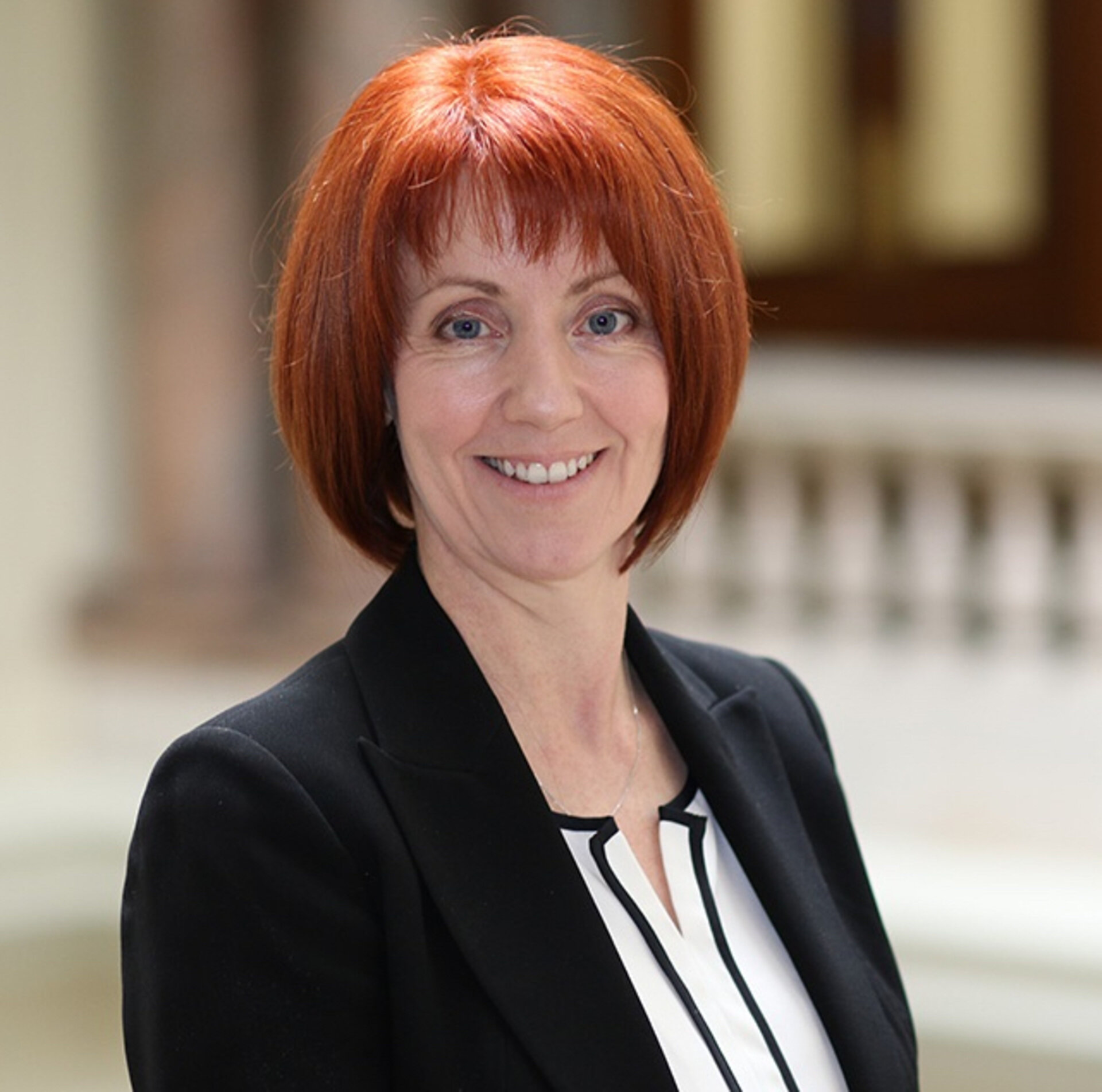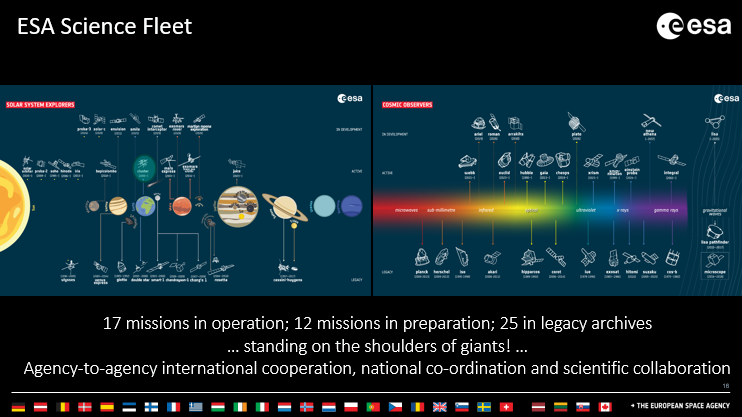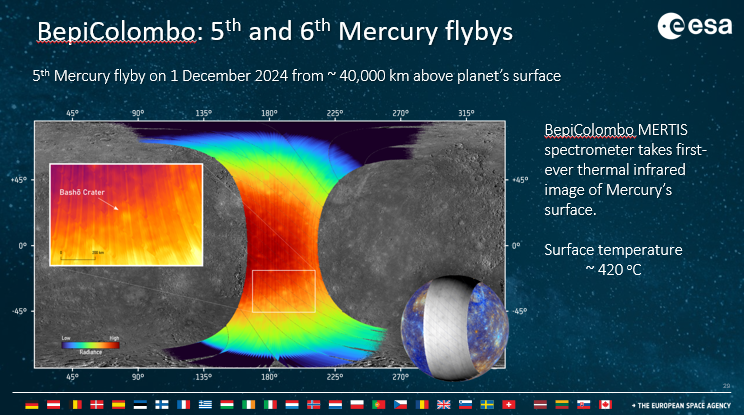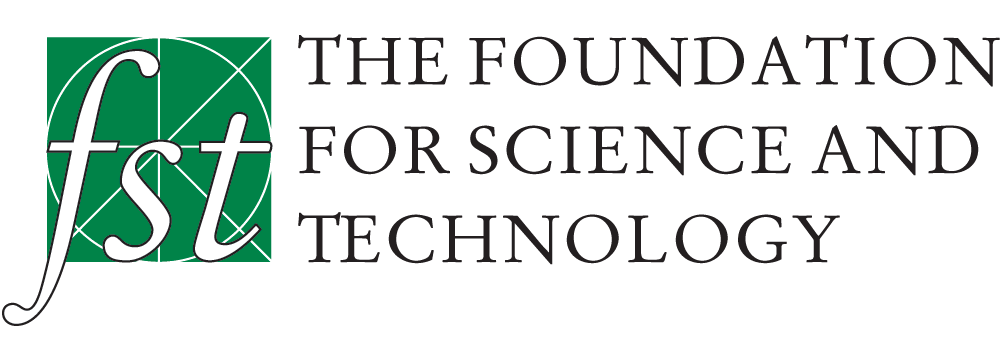FST JOURNAL
Space Science Missions
DOI: https://www.doi.org/10.53289/YDTP1864
Out of this world: how Europe is pushing boundaries in space science
Professor Carole Mundell

Professor Carole Mundell is an internationally renowned scientist with extensive experience in inclusive leadership, operational management, strategy and international science policy development. She joins ESA from the University of Bath where she held the Hiroko Sherwin Chair in Extragalactic Astronomy, was founding Head of Astrophysics, and served as Head of the Department of Physics until becoming the first woman Chief Scientific Adviser at the UK’s Foreign and Commonwealth Office in 2018 and first Chief International Science Envoy in the Foreign, Commonwealth and Development Office until 2021. She was elected President of the UK Science Council in 2021.
Summary:
- The ESA science programme aims to enable enables world leadership in cutting-edge science and technology, empowering its 23 member states to drive global and interdisciplinary space science initiatives
- The quest for breakthrough discoveries drives technological innovation and economic growth, whilst inspiring the next generation of thought leaders
- Despite challenging global circumstances in 2022, the ESA’s budget was increased by 17%, reflecting the importance of space to its member states governments
- Europe has many proud space science accomplishments including landing on Saturn's moon Titan – still the most distant ever landing made by humanity - and the Rosetta mission that landed humanity’s first probe on a comet. Current missions span a wide array of scientific inquiries, from near-Earth heliophysics to the fundamental nature of spacetime
- ESA’s zero debris charter and sustainability charter enshrines their commitment to responsible space mission delivery from cradle to grave.
As the director of science at the European Space Agency (ESA) for the past two years, I have come to appreciate the diverse perspectives surrounding ESA's science programme. Often, when we think of science, we envision brilliant scientists in offices, and it begs the question: why do we need all this funding? I want to emphasise that it is not just about scientific inquiry but also about technology, engineering, and economic growth. Our programme is strictly designed to cost; we do not request open-ended funding from our ministers. Each mission within the science programme is crafted to be cost-effective, requiring us to operate at ruthless efficiency. This year marks a significant milestone for ESA for two reasons.
First, we are celebrating 50 years since the agency's founding; the UK is a founding member. 50 years ago, ESA emerged from the merger of the European launch organisation and the European Space Research Organisation. The science programme serves as the backbone of our agency, and we aim to make it even stronger for the future. Additionally, we are welcoming Slovenia as a full member, bringing our total to 23 member states. Every three years, we gather our ministers to discuss funding for ESA. In 2022, despite challenging global circumstances—like the cost of living crisis and the Ukraine conflict—our member states increased the ESA budget by 17%. It is inspiring to see such commitment across political lines, that acknowledges the importance of space and power of working together across national borders for common interests.
A founding programme within the ESA portfolio, the science programme forms part of the mandatory programme for member states, ensuring their investment yields direct benefits and member states industries and scientific communities can plan their activities over ths short, medium and long term. Co-ordinating the diverse ambitions, interests and capabilities of 23 countries is a challenge I relish! At its core, the goal of the science programme is to enable leadership in cutting-edge science and technology, empowering member states to drive global space science initiatives. One excellent example is our Euclid mission, which has garnered attention for its world-leading cosmological contributions.
Our missions
This Scientific programme allows for long-term sustainability, with multi-year budgeting that benefits industry planning. Our long-term implementation strategy has evolved through a bottom-up process from the scientific community, shaping missions that are competitively proposed and selected. In turn, European industrial competitiveness is crucial for the implementation of these iconic missions and for delivery value for money to member state tax payers.

To give you a sense of what Europe is capable of, look at our accomplishments over the past two decades, such as the incredible landing on Saturn's moon Titan and the Rosetta mission that landed on a comet. These successes illustrate Europe’s growing capabilities in space science and exploration. We are continually innovating, with a focus on efficiency and effectiveness in our missions – underpinned by scientific excellence - exemplified by our upcoming projects such as those aimed to launch in 2028. Our current missions span a wide array of scientific inquiries, from near-Earth heliophysics to the fundamental nature of spacetime itself. This year, our ESA Director General will present his new budget proposal to our member states and their ministers will gather in Bremen, Germany in November to agree on our level of resources for the coming three years. In this, our 50th Anniversary, it is clear that Europe through ESA leads the world in fundamental ‘big’ science and there is a clear imperative for a stable and healthy budget to ensure sustained global leadership in the coming years : without investing in technological advancements now, we risk a gap in our mission capabilities and loss of scientific talent and engineering/technology industrial competitiveness.
In addition to drawing together our 23 ESA member states in scientific collaboration on missions that no single country could achieve alone, the excellence of the ESA Science programme has long been a vehicle for international collaboration with other leading space agencies such as NASA and JAXA. We each have our unique areas of leadership and strategic alignment across our missions enables us to do even more to foster innovation, economic growth, peaceful dialogue and cultural understanding.
The sun

We have a long history of studying our closest star – the Sun. Flying at the moment, bery close to the Sun is our wonderful Solar Orbiter mission. All of our missions operate in the most extreme conditions: deep space, hot and cold temperatures, magnetic fields, particle fluxes, and radiation. Solar Orbiter is delivery a range of scientific ‘firsts’ – with exquisite resolution, the Sun’s surface is being imaged in great detail and we have real-time measurements of the hot plasma dynamics, magnetic fields, rotation and radiation. Deeping our understanding of the Sun, is critical in todays’ modern technological era in order to help our colleagues in planetary defence and space safety protect space and ground-based assets when the Sun is most active and to understand its impact on the Earth even when it is in its less active phases.
But perhaps the most important capability of Solar Orbiter will come soon when we start to manoeuvre the spacecraft out of the plane of the Solar System in which the Earth orbits the Sun. We will gather humanity’s first ever view of the poles of the Sun. A triumph of spacecraft flight dynamics from our ESA missions operations colleagues, and an ambition of USA and Chinese scientists who would like future Solar missions from their space agencies to also have this capability!
Venus, Jupiter’s moons, Mercury and beyond
In order to change the trajectory of Solar Orbiter, we used gravitational slingshots around Venus to change its speed and orbital plane. We never miss an opportunity for extra science and so we used the Venus flyby to gathered valuable data about the planet. These data are a small taste of what will be possible with our upcoming Envision mission to Venus in 2031, which will study the planet from its upper atmosphere to its core, exploring a very hostile environment that has temperatures of 420 degrees Celsius and about 1000 atmospheres of pressure and answering why Earth’s sister planet is so different.

To give you an example of the extreme conditions we work in, there is the BepiColombo mission we are running with the Japanese Space Agency. In the background, you can see Mercury passing the limb of the sun, which truly illustrates the harsh operating environment. We are facing engineering challenges with power transfer from solar panels, but we are overcoming them with clever methods and gravitational assists. We will settle into orbit around Mercury in 2026 to release two probes. Even with just 30 minutes of flyby data, we have mapped Mercury's magnetic fields and captured the first thermal mid-infrared photographs of its surface.
Looking now to the outer Solar System, we launched a new mission in 2023 called JUICE – Jupiter Icy Moons Explorer. This mission aims to determine whether Jupiter's icy moons could be habitable for life. While we will not land, we believe there might be salty liquid oceans beneath their icy crusts. We are using gravity assists to reach our destination, having already conducted a flyby between the Earth and Moon, gathering significant scientific data along the way. Now, bringing everything together, we hope to secure funding for a future flagship mission that will fly to Saturn, tour its icy moons and land humanity’s first-ever astro-biology laboratory on a distant planetary body. The target destination will be the surface of Saturn’s moon Enceladus. Scientists believe that Enceladus is the most likely location in the Solar System for detecting signs of life beyond Earth. And the race is on. We already have a cosmic deadline for landing – 2052, when the south pole of Enceladus is illuminated by the Sun and planetary alignments are optimal. This may sound far in the future, but we must launch the mission in 2043, and so all of the technology for this exciting and ambitious mission must be developed ready to begin building the mission by 2034. We need a modest budget increase this year to put that technology development on a firm footing and grow the capabilities in our member states industries. One of the biggest challenges will power for the lander. We have a strict mass limit, so innovative instruments must developed - miniaturised but highly sensitive and robust. We need a very special battery to power the laboratory on the surface and all of the operations at Saturn will be autonomous and intelligent because real-time operational communications are impossible so far from Earth.
We won't just limit ourselves to our solar system; we are also extending our search for habitable exoplanets. Although we cannot travel to planets in distant solar systems, our Plato and Ariel missions will gather the light from distant planets and their host stars, seeking Earth-like planets around Sun-like stars and studying the atmospheric chemistry of thousands of distant worlds. Detecting signs of life in our Solar System will be profound. Discovering signs of life beyond will be transformative and answer one of humanity’s biggest questions – are we alone?
The Lisa mission, which was endorsed for implementation on the same day in 2024 as our Envision mission, will together see an investment of 2.6 billion euros into our member states industrial and scientific ecosystem. LISA – the Laser Interferometer Space Antenna – is actually three identifical spacecraft that will fly in convoy in an Earth-Sun orbit to form humanity’s first space-based gravitational wave interferometer. The technology and precision engineering required to realise this mission is exceptional. The three spacecraft will fly in a triangular configuration, each separated by 2.5 million kilometers and aligned by lasers to within the size of an atom’s core. As ripples in spacetime caused by catastrophic cosmic events such as the violent merger of supermassive black holes reach LISA, the minute disturbance in the positions of the spacecrafts – and therefore the distance between them – will be measured and scientists will probe the fabric of spacetime directly. These ripples – named gravitational waves – were predicted from Einstein’s General Theory of Relativity and were proven to exist in 2015 when the first gravitational waves from the merger of two small black holes were detected by the ground-based LIGO interferometer. LISA will open a new window on the dark gravitational universe and push the frontiers of our understanding of the laws of physics.
LISA builds on a long history of European leadership in precision space science missions. This year we passvied the GAIA mission – our billion-star mapper which over its 11.5 year mission lifetime has revolutionised our understanding of the formation and evolution of our home galaxy, the Milky Way. This mission has also transformed the way we serve science; the GAIA consortium of over 400 scientists working to analyse the data has enabled unexpected discoveries across astrophysics. The study of over 150,000 asteroids in our Solar System and the discovery that 350 of them have little moons of their own. The discovery of hidden black holes in our own Milky Way galaxy that are 10, 20 and 30 times more massive than our Sun, whose formation mechanisms are yet to be understood and whose precursors will likely act as cosmic calibrators for our LISA spacesystem. Being able to precisely measure tiny wobbles in the trajectories of billions of stars is new way to discover hidden cosmic objects.
ESA has a strong pedigree in space navigation. Standing on the shoulders of giants, GAIA epitomises an even longer history of using the night sky for navigation, from Hipparchus in 150 BC, to scientists like Flamsteed and Brahe where improvements in precision of a factor of 1000 were achieved over 2,000 years – painstaking work and impressive and important advances of the day. In contrast, the leap into space has yielded a 10,000-fold increase in navigation precision within just 25 years!
Long term planning and an inspirational future
In this short talk, I can barely scratch the surface of the array of novel and ground-breaking technologies we create with our member states, building missions to tight budgetary constraints and stringent delivery schedules. But I hope I have given you a flavour of European ambition, capability and the translation of wonder into real-world impact. While we often must invent novel and innovative technologies to deliver the scientific goals of our ESA missions, we also work hard to enable technology transfer to industries beyond space. The ‘molecular sniffers’ on board Rosetta’s Philae lander are now used in the perfume industry; the accelerometers developed by the UK for our Plato and ExoMars missions are useful in a wide range of transport systems and perhaps in the future in automous vehicles.
Our space science strategy and rolling business plan for the coming ESA Ministerial conferences in years 2025, 2028, and 2031, emphasises long-term sustainable planning, business growth and globally leading break-through science.
And we look forward to continuing to deliver to our member states and international partners for the next exciting 50 years and beyond.
